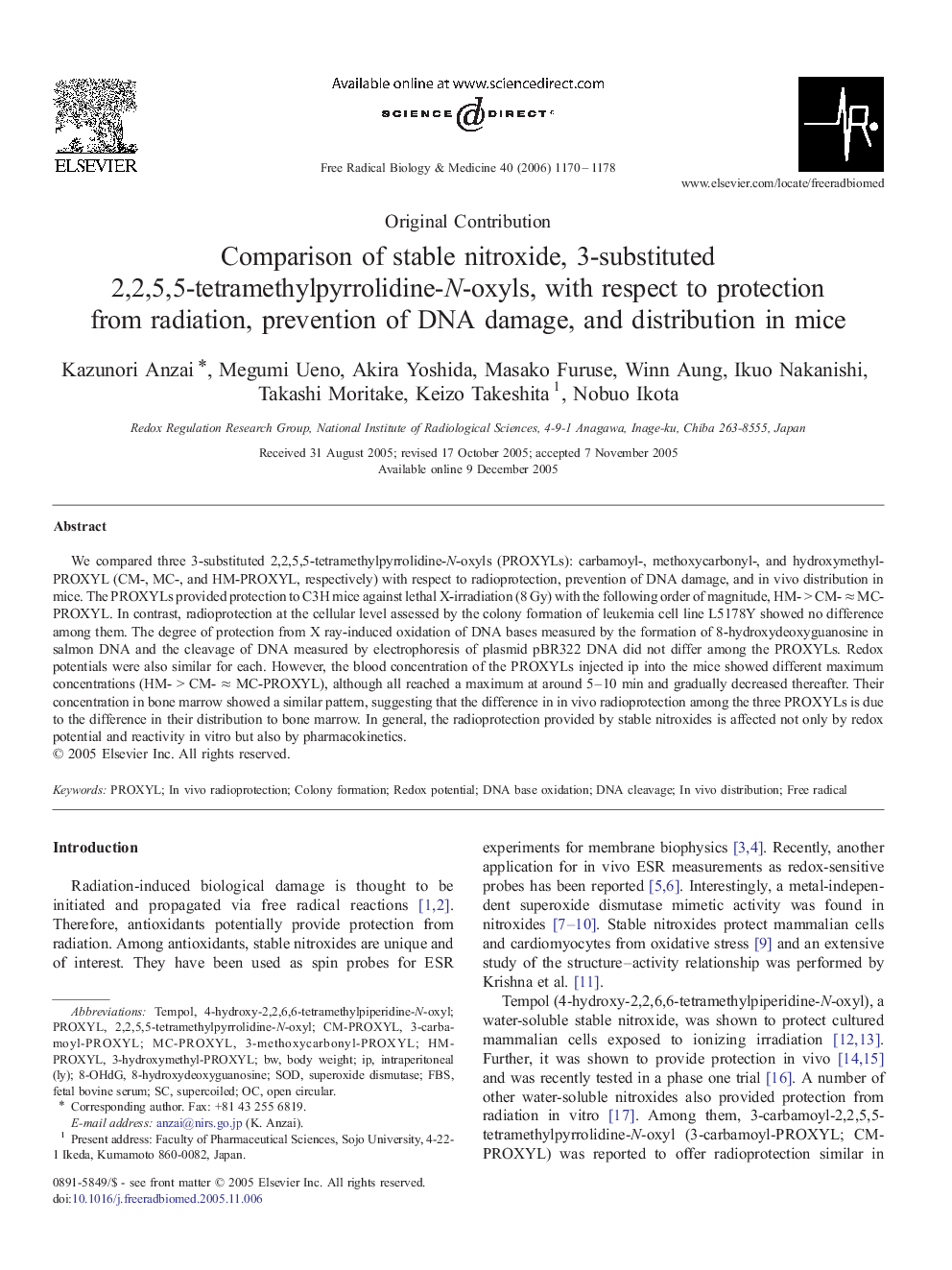| Article ID | Journal | Published Year | Pages | File Type |
|---|---|---|---|---|
| 1911965 | Free Radical Biology and Medicine | 2006 | 9 Pages |
Abstract
We compared three 3-substituted 2,2,5,5-tetramethylpyrrolidine-N-oxyls (PROXYLs): carbamoyl-, methoxycarbonyl-, and hydroxymethyl-PROXYL (CM-, MC-, and HM-PROXYL, respectively) with respect to radioprotection, prevention of DNA damage, and in vivo distribution in mice. The PROXYLs provided protection to C3H mice against lethal X-irradiation (8 Gy) with the following order of magnitude, HM- > CM- â MC-PROXYL. In contrast, radioprotection at the cellular level assessed by the colony formation of leukemia cell line L5178Y showed no difference among them. The degree of protection from X ray-induced oxidation of DNA bases measured by the formation of 8-hydroxydeoxyguanosine in salmon DNA and the cleavage of DNA measured by electrophoresis of plasmid pBR322 DNA did not differ among the PROXYLs. Redox potentials were also similar for each. However, the blood concentration of the PROXYLs injected ip into the mice showed different maximum concentrations (HM- > CM- â MC-PROXYL), although all reached a maximum at around 5-10 min and gradually decreased thereafter. Their concentration in bone marrow showed a similar pattern, suggesting that the difference in in vivo radioprotection among the three PROXYLs is due to the difference in their distribution to bone marrow. In general, the radioprotection provided by stable nitroxides is affected not only by redox potential and reactivity in vitro but also by pharmacokinetics.
Keywords
Related Topics
Life Sciences
Biochemistry, Genetics and Molecular Biology
Ageing
Authors
Kazunori Anzai, Megumi Ueno, Akira Yoshida, Masako Furuse, Winn Aung, Ikuo Nakanishi, Takashi Moritake, Keizo Takeshita, Nobuo Ikota,
